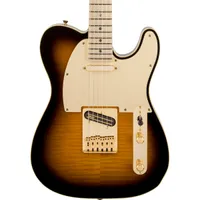Best Telecasters 2025: Top-rated Fender Teles for all players
Shopping around for a Fender Telecaster? Here’s a list of our top choice Teles from Fender and Squier
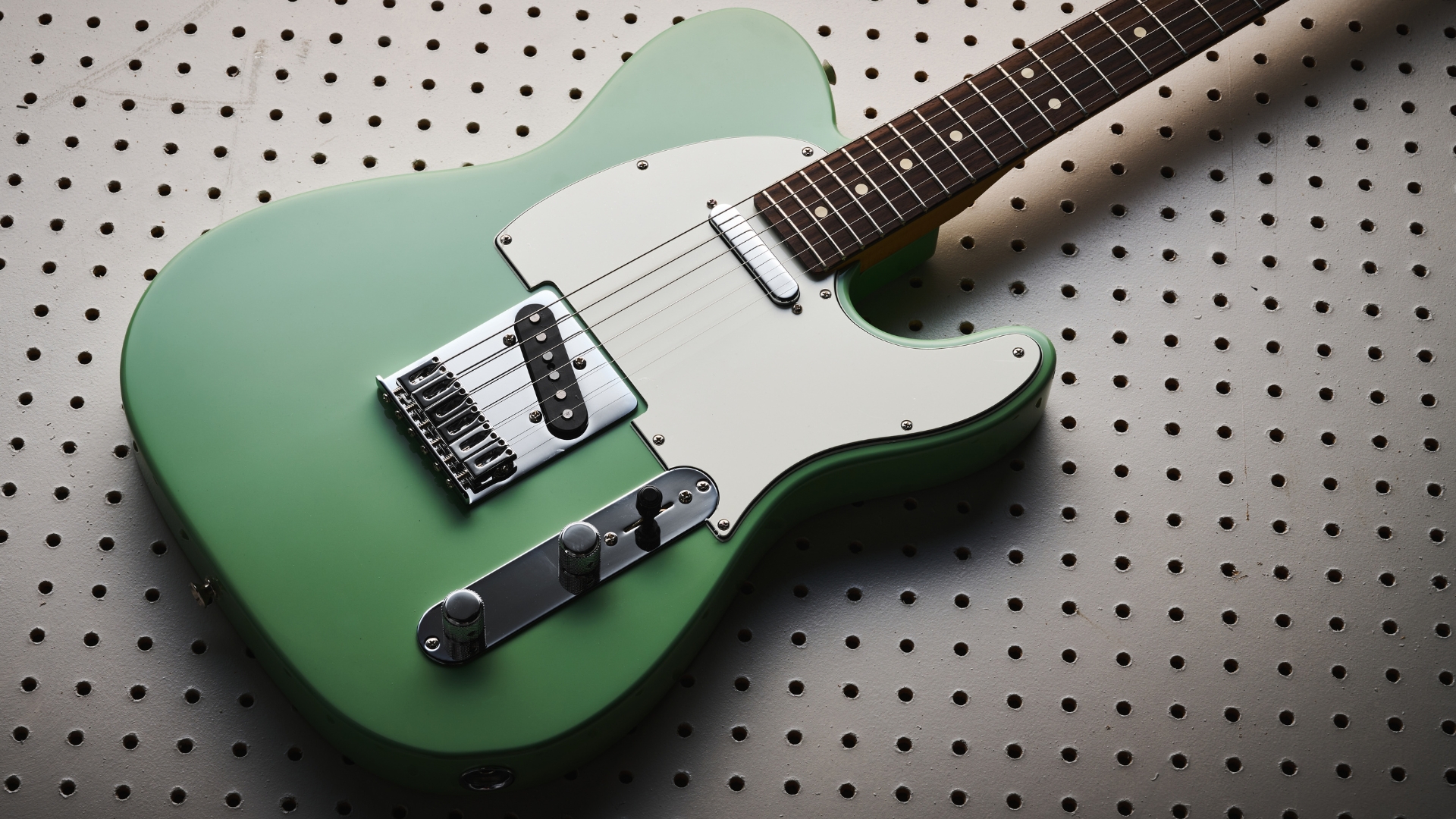
Synonymous with everything from classic country to punk rock, the best Telecasters are up there with the most versatile electric guitars money can buy. While technically it was the Esquire that was the first commercially available solid-body guitar, the Telecaster quickly evolved from it, becoming one of the primary choices for guitarists at the time – and it remains so to this day.
I distinctly remember the first time I picked up a Telecaster. It was just a fairly run-of-the-mill Mexican Standard (the equivalent of a Player II series in today’s lineup), but it had a level of comfort I wasn’t expecting. Playing it was a joy – it almost felt familiar. Ever since then, I’ve searched for another Tele that felt that good – and it turns out, quite a lot of them do. From bargain Squiers to the highest-quality American-made works of art, the Telecaster has a remarkable knack for combining effortless playability with an eclectic array of tones.
If you want a brilliant all-rounder, then I suggest you take a look at the Fender Player II Telecaster. It mixes vintage and modern Tele design brilliantly, and at a price that’s very accessible. If you want the Tele experience on a budget, then the Squier Sonic Telecaster is low-cost and great value for money. For those looking to buy their first Telecaster, I’d highly recommend the Squier Classic Vibe 50s Telecaster, which massively overdelivers on the classic Tele experience versus the cost.
If you’re new to the world of the Telecaster, I’ve included loads of useful sections that will get you up to speed on your knowledge of one of the monoliths of the guitar world. In my how to choose section I break down what to look for when buying a Tele, and I’ve curated an FAQ section which answers all the most common questions guitarists have asked me. Finally, there’s a glossary of key terms that will get you up and running with all the Tele-specific lingo you’ll encounter in this guide.
Save big on guitar gear and stock up on essentials for less with our handpicked Black Friday guitar deals highlights.
My top picks

Mid-priced shoppers should look at the Player II Telecaster from Fender, which perfectly blends classic Tele with modern appointments such as the 6-saddle string-through-body bridge with block steel saddles and a chambered ash body.
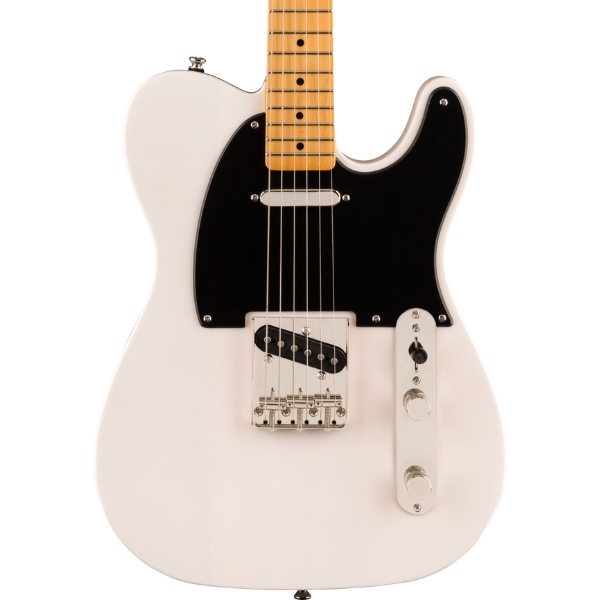
For those who want to buy their first Telecaster without busting the bank, the Squier Classic Vibe ‘50s Telecaster is just about all the Tele you’ll ever need. It’s fantastic straight out of the box, with classic 50s-correct finishes providing stunning good looks.
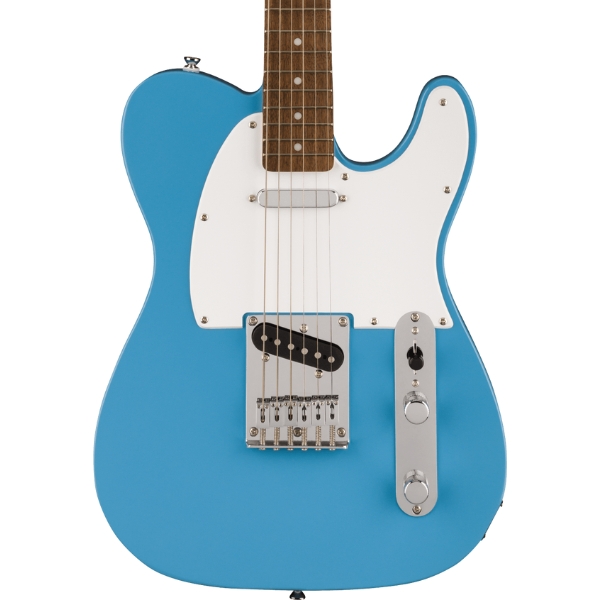
For the Tele experience on a budget, the Squier Sonic Telecaster delivers. It’s not as fancy as some of the others in this guide, but it delivers that classic Tele twang with surprisingly good build quality considering the price.
Best overall

1. Fender Player II Telecaster
Our expert review:
Specifications
Reasons to buy
Reasons to avoid
✅ Buy if you want a great value Tele: Balancing beautifully between classic tones and modern playability with an excellent price point, the Player II is ideal for the vast majority of players.
❌ Avoid if you prefer period-correct appointments: Despite being more vintage-inspired than some of the guitars in this guide, the six-saddle bridge might put off some players.
Overview: The Player II line from Fender is one of my favorite series across the whole electric guitar market, offering supremely well-built instruments at an attainable price – all with the illustrious Fender name on the top of the headstock. The Player II Telecaster is a step up in just about every dimension from the original Player series, providing refinements throughout while sticking to the task of being a solid workhorse of a Telecaster.
Build quality: For the entry-level Telecaster in Fender’s range, the attention to detail on the build is very impressive, with the rolled fingerboard edges being a particular highlight and providing a ‘worn-in’ feel. The hardware throughout is of really high quality and gives rock-solid stability when playing. I’ve experienced some very minor issues with demo instruments shipped from Fender, such as slightly sharp frets and buzzing nuts, but nothing that a quick setup didn’t fix.
Playability: I’d argue this is among the best Telecasters you can buy for gigging, as it combines that excellent stability with fantastic playability. As it comes in at a sensible price, I’d also be happy enough taking it on the road – especially when just about every one of the many finishes it comes in would look just as good, if not better, with a bit of relicing.
Sounds: The Alnico 5 pickups are slightly more modern-voiced than vintage-styled Teles, with more bite and power, but this helps them cut through nicely in a band setting. It may be too much for some, but I really like the attitude of these pickups, particularly for playing rock.
Best for beginners

2. Squier Classic Vibe ‘50s Telecaster
Our expert review:
Specifications
Reasons to buy
Reasons to avoid
✅ Buy if you want a brilliant Tele for beginners: Squier’s Classic Vibe series really overdelivers for the money, making this a great option for those looking for their first Telecaster.
❌ Avoid if you’re a fan of satin necks: The gloss finish here is beautiful, but it can feel a little sticky when you first get it.
Overview: Fender’s Squier Classic Vibe range draws on their rich heritage of groundbreaking guitar design and offers some of the best vintage-inspired electric solidbodies money can buy. Highly regarded by pro players and beginners alike, the Classic Vibe Squiers easily hold their own against some of Fender’s more expensive instruments and represent incredible value for money.
Build quality: Harking back to Fender’s original design, the ‘50s Telecaster comes in a choice of two finishes: early ‘50s era Butterscotch Blonde and the paler White Blonde finish seen from the mid ‘50s onwards. It has also been decked out with vintage-style appointments such as a tinted gloss neck finish and nickel-plated hardware.
Playability: The slim "C"-shaped neck profile is comfortable and the 9.5" radius fingerboard and narrow-tall frets make navigating the neck a dream. If you’ve been unfortunate enough to buy a poor-quality starter instrument, you’ll immediately notice a significant upgrade if you pick up one of these – and I see it perfectly positioned as a guitarist's second electric.
Sounds: The pine body might seem a little strange, but it was found on some rare, very early Teles, so isn’t totally out of the blue, while the maple neck, on the other hand, is far more familiar. This combination of tonewoods means the Classic Vibe ‘50s Tele is bright and lively and the vintage tones from the pair of Squier alnico single coil pickups are surprisingly versatile.
Best budget

3. Squier Sonic Telecaster
Our expert review:
Specifications
Reasons to buy
Reasons to avoid
✅ Buy if you want the cheapest Telecaster: Coming in around the $230 mark, the Squier Sonic Tele is incredible value for money.
❌ Avoid if you’re looking for something premium: This is a great guitar for the money, but there are signs that it’s affordable.
Overview: The Squier Sonic Telecaster is just about the cheapest Telecaster money can buy, but I’ve been astonished by the quality. I’ve always felt that a Tele is a strong candidate for new guitarists to learn on due to its simplicity, and the Sonic Tele is just about as perfect as a first guitar gets.
There’s an argument that you should save up and get an Affinity Telecaster (the next Tele up in the Squier range) instead, but the difference between the two isn’t that discernible, with the most notable difference being the addition of a couple of extra colors.
Build quality: The build of the Sonic Tele is suitably sturdy and will withstand a few bumps when taking it between music lessons or gigs; however, there are a few signs that give away its price. For example, you might find one or two slightly pointy fret edges, and while the hardware is robust enough, this would definitely be an area to look into upgrading.
Playability: As far as ‘first guitars’ go, the Sonic Telecaster is very comfortable to play, which I think is the most important thing for new players to look for – if it’s not comfortable, you’re not going to want to pick it up and play it. It is worth considering getting a professional setup from out of the box, but otherwise, it’ll be a great guitar for you to play for many years.
Sounds: One of the highlights of the Sonic Telecaster is its authentic Tele tones. Are the ceramic pickups as refined as more premium Telecasters? No, but do I still have a great time plugging the Sonic Tele into a gunned amp and strumming some huge chords? Absolutely. Again, it might be an area to consider modifying, but for most, you’ll be delighted with the tones.
Best vintage
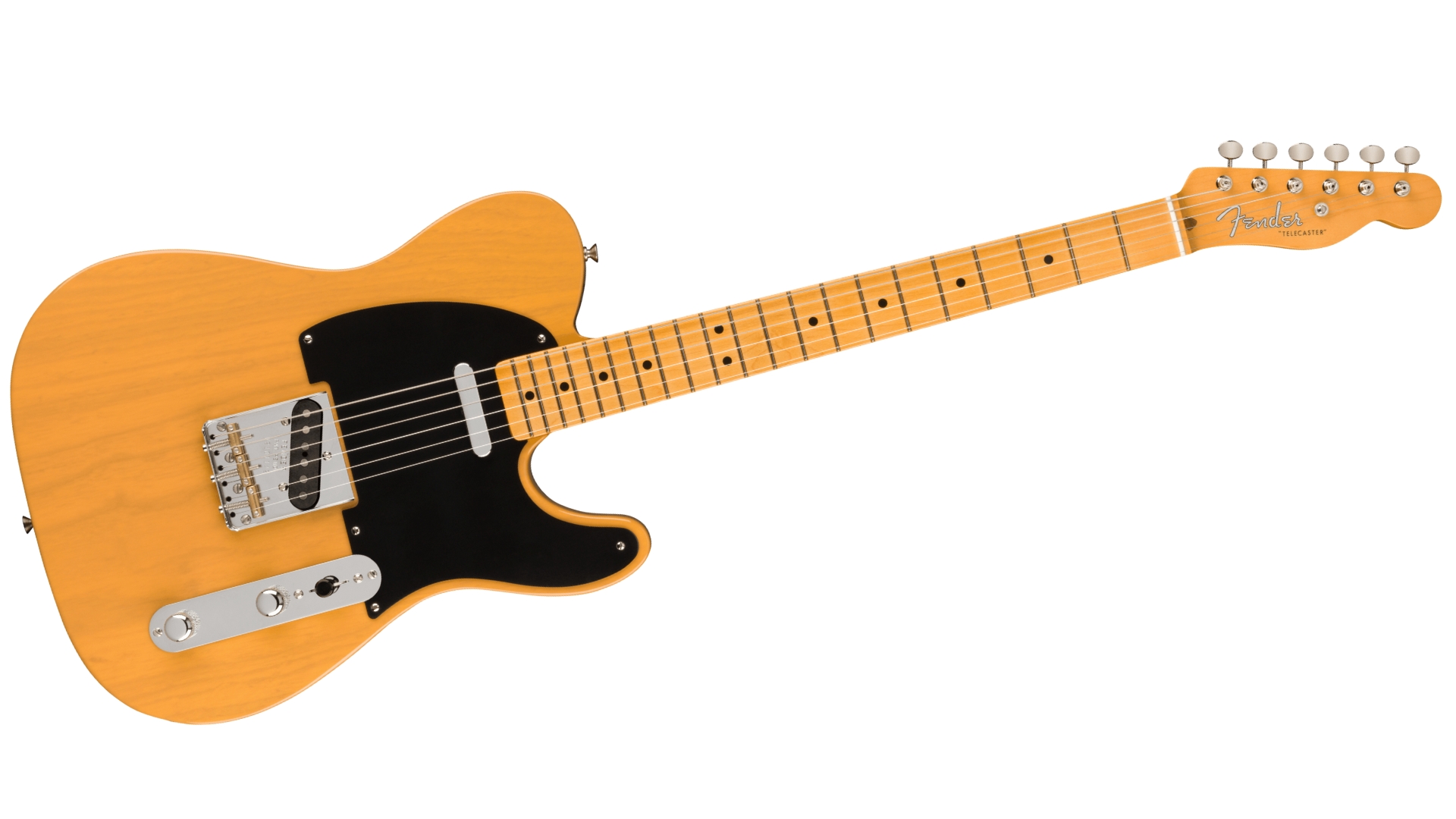
4. Fender American Vintage II 1951 Telecaster
Our expert review:
Specifications
Reasons to buy
Reasons to avoid
✅ Buy if you are looking for a classic Tele experience: This is an authentic recreation of the original ‘Blackguard’ Tele, which was the first mass-produced solid body guitar
❌ Avoid if you want modern playability: The ‘U’ shaped neck profile could feel too chunky for players used to more modern neck profiles.
Overview: The American Vintage II series marked a real return to form for Fender when it came to high-end, American-made, vintage-inspired electric guitars. “The idea was to go back to the original recipes and make sure we’re adhering to them,” said Justin Norvell, executive vice president of Fender products.
While the new American Vintage II series offers a generous selection of vintage-correct Teles (including a 60s-style rosewood-board guitar and three humbucker-equipped ‘70s instruments), the 1951 reissue is my pick of the bunch – a beautifully rendered version of the original Telecaster.
Build quality: From the ash body and Butterscotch Blonde nitro finish to the vintage-style hardware – much of it still manufactured on the same 50s- and 60s-era Fender factory machines – this feels like a fitting way to honor the original Blackguard Teles, matching their craftsmanship and build quality.
Playability: The “U”-shape neck is, unsurprisingly, very vintage-feeling in the hand, and deeper than the modern “C”-shape necks found on many newer Teles. Yet it slots comfortably into the hand and quickly feels just right. Details such as smooth fret ends and the rounded bone nut are to be expected on a guitar at this price, but they still contribute to a truly special playing experience.
Sounds: While the feel of this Tele is special, sonically it is flabbergasting. It oozes musicality regardless of setting, with swathes of top end from the bridge single coil that never grates, while the neck pickup is rich and bold. Cleans are remarkably smooth, while either pickup provides harmonically complex, organic overdrive when paired with a good tube amplifier.

“For lead, the bridge pickup sounded great with the tone knob rolled down a little to tame the bite, and even at loud stage volume, pickup squeal wasn’t an issue, although it was easy to get controllable feedback by moving closer to the amp.”
Read more: Fender American Vintage II 1951 Telecaster review
Best modern
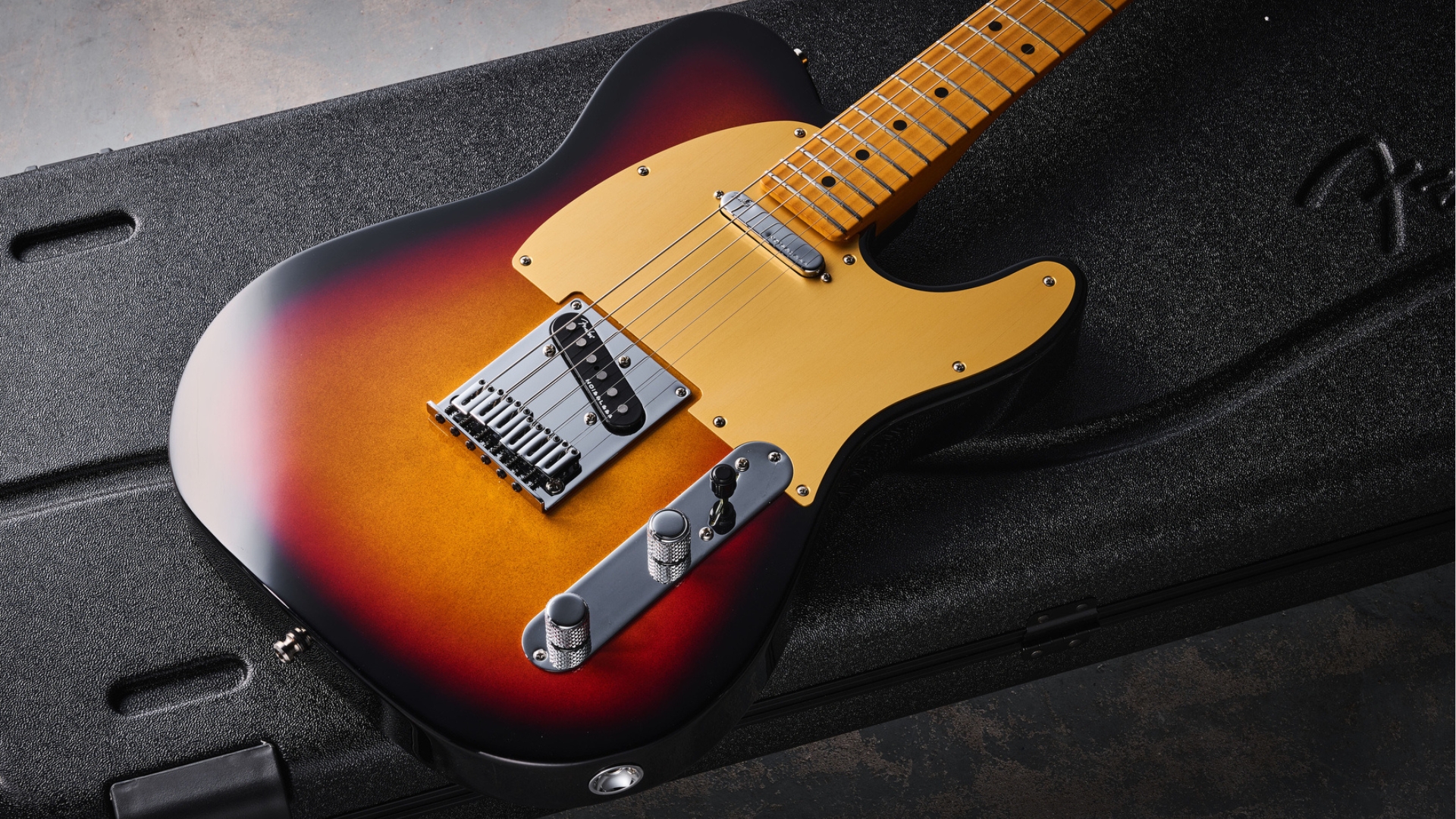
5. Fender American Ultra II Telecaster
Our expert review:
Specifications
Reasons to buy
Reasons to avoid
✅ Buy if you want a modern Telecaster: With its compound radius fretboard, advanced electronics and S-1 switching, this Tele is idea for modern players.
❌ Avoid if you prefer a classic Telecaster: There’s no three-saddle bridge here, so look elsewhere if you want that traditional Telecaster experience.
Overview: The latest iteration of Fender’s Ultra series has arrived, delivering the most modern Telecaster experience you can buy right now. The Fender American Ultra II Telecaster is perfect for those players who want modern playability with that iconic Telecaster single-coil pickup pairing.
Build quality: Alongside the classic alder body the Ultra II has a quartersawn maple neck, which delivers enhanced stability with a nice touch of the gold Fender logo on the headstock. The hardware is robustly applied, with knurled knobs that are easy to turn even with a sweaty hand, and a six-saddle bridge with chrome saddles to deliver a mix of traditional and modern.
Playability: The neck is satin finished which delivers an unbelievably smooth playing experience alongside the modern ‘D’ profile. It’s a beautifully balanced playing experience thanks to the rolled fingerboard edges, which really gives you the feeling of being able to play faster and more smoothly.
Sounds: The pickups of the Ultra II Tele certainly deliver plenty of classic Tele twang, but there’s a lot of versatility there too. The bridge pickup delivers supreme clarity, sounding amazing whether playing compressed clean tones or going into the drive channel of a tube amp.
Don’t be shy of applying gain to them either, as that Noiseless pickup design genuinely does reduce the hum. Add in the S-1 switching for a series pickup configuration and you’ve got one incredibly versatile instrument.
Best Thinline

6. Fender Vintera II '60s Telecaster Thinline
Our expert review:
Specifications
Reasons to buy
Reasons to avoid
✅ Buy if you want an authentic Thinline experience: This a properly voiced ‘60s Tele, even down to the pickup winding.
❌ Avoid if vintage appointments aren’t your thing: With the pickup voicing and three saddle bridge this isn’t one for players who prefer modernity.
Overview: I’m a huge fan of modern Telecasters, but there is something unmistakably special about a vintage Tele. Unfortunately, it can be quite hard to get your hands on a beautifully maintained one (without spending thousands) – which is where the Vintera II ‘60s Telecaster Thinline comes in.
Build quality: The first thing you’ll notice about the Vintera II Thinline is that it’s a really handsome guitar, with details such as the 4-ply aged white pearloid pickguard adding a subtle touch of class. And the classy features don’t stop there – the “F”-branded tuning machines provide vintage looks with a finer gear ratio and enhanced tuning stability.
Playability: The highlight of the Vintera II ‘60s Thinline is the neck, adorned with a 7.25” radius fingerboard that provides superb comfort and easy playing when paired with the vintage-tall frets – one of the few non-period-correct components, oversized for huge bends and vibrato.
The “C”-profile neck itself gradually thickens toward the 12th fret and feels lovely and full in the hand without being overly chunky. If you change tuning regularly, the vintage 3-saddle bridge may be a concern in terms of intonation, but I haven’t experienced any issues with this.
Sounds: The semi-hollow construction isn’t just beautiful – it gives the guitar a warm, rich tone with a slightly nasal quality, which is fantastic when you roll back the tone control for smooth jazzy moments. The vintage-spec pickups twinned with the slotted steel “barrel” saddle bridge provide crystal-clear chime with plenty of that classic, unmistakable twang.
Also consider
For most players, the above six guitars should have your needs covered when it comes to purchasing a new Telecaster. If you didn't find what you were looking for, then here are a few more options for you.
Fender American Professional II Telecaster Deluxe
Alder body | Maple neck | Maple fretboard | HH pickups
The Fender American Professional II Telecaster Deluxe is based on the original dual Seth Lover-designed Wide Range humbucker variant released in 1973, which topped the Tele price list for several years during the ‘70s hard rock era.
★★★★½
Read more: Fender American Professional II Telecaster Deluxe review
Fender Brent Mason Telecaster
Ash body | Maple neck | Maple fretboard | SSS pickups
The Fender Brent Mason Telecaster might seem a bit of a rogue selection for one of the best Telecasters – there are several others in Fender’s range that sit around this price point and are more “authentic” to the very first Teles – but I love the, frankly, ridiculous versatility of this Telecaster. Everything from the ground up with the Brent Mason Tele is unique, from the Primer Gray satin lacquer finish, to the triple-pickup design.
★★★★½
Read more: Fender Brent Mason Telecaster
Fender Richie Kotzen Telecaster
Ash body with flame maple top | Maple neck | Maple fretboard | SS pickups
Originally released as a Japan-only model, the Fender Richie Kotzen Signature Telecaster is a longstanding artist guitar that has almost gone beyond being thought of as a signature model. While it took almost 20 years to make it into the US catalog, it has become a firm favorite of many players thanks to its attention-grabbing looks and unique pickup selection.
★★★★½
How to choose
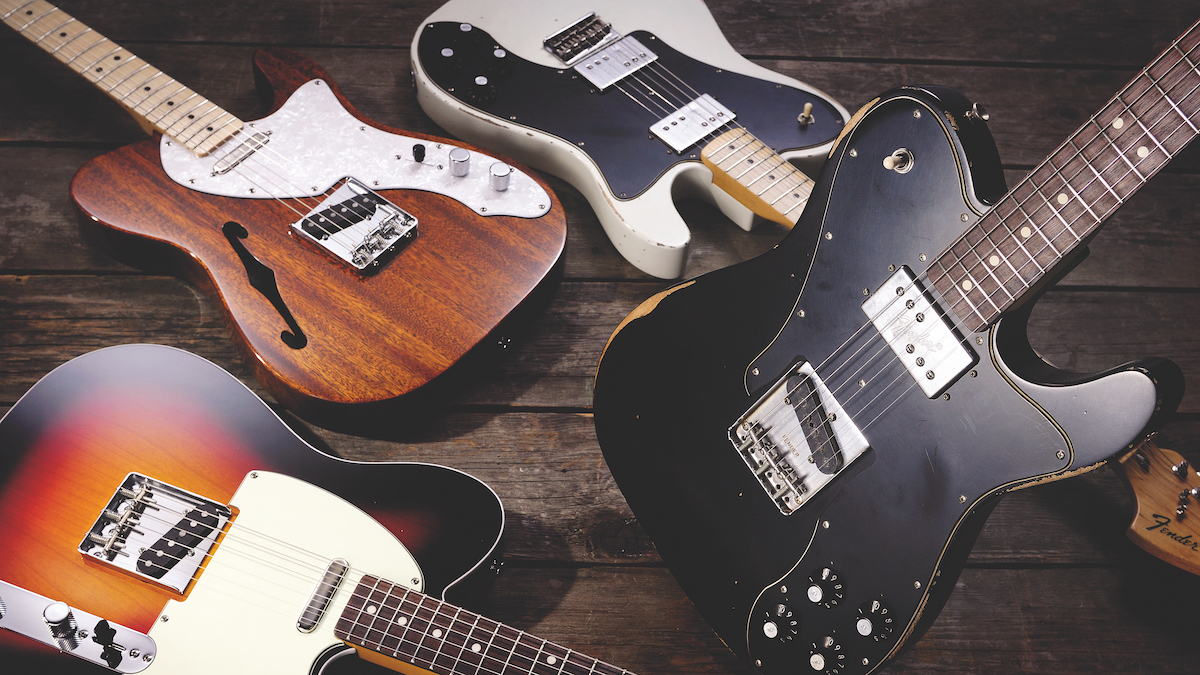
Telecasters have been around for a long time and between vintage-correct, vintage-inspired with modern touches, and truly modern takes, there are a pretty astonishing amount of variants around – over 250 at some of the larger retailers.
Deciding what makes a particularly special Telecaster, then, can be a bit of a tricky task. My suggestion would be to break your search down by the following three categories, which will narrow your options down to the perfect Tele for you.
1. Budget
You can trust Guitar Player.
As one of Fender’s core models, Telecasters are available at every tier of their range, from beginner electrics to Custom Shop instruments that can run into the thousands – and even tens of thousands – of dollars. Regardless of your budget, there should be a Tele for you, ranging from traditional to more modern versions.
2. US, Japan, Mexican, or Squier
Something to consider alongside budget is the range you want your guitar to sit in. You’ll be faced with the choice of whether to buy a Squier – made across multiple factories in Asia – a Mexican model, which will be Fender-branded but sit as the lowest-priced guitars in their range, followed by Japanese models, which are considered premium instruments, and finally US-made models, which sit at the top of Fender’s line and also include their prestigious Custom Shop instruments.
Depending on what is more important to you – price or the name on the headstock – your decision may be made for you, as there isn’t much crossover between the different ranges in terms of price.
3. Type
Alongside the historic Telecaster first seen in the ‘50s, there are now a number of classic Telecaster “types” with different configurations that may be more suitable for your playing style. These include the Thinline Telecaster, which is largely similar to a standard Tele but, being semi-hollow, boasts a warmer and slightly more acoustic quality than its solid-bodied brother.
The Telecaster Deluxe is more obviously different, with a pair of humbuckers providing additional power, along with suitably different visual appointments – including a larger pickguard and a headstock more reminiscent of a ‘70s Stratocaster than a traditional Tele.
For those who love the Tele sound but fancy a different shape, Fender and Squier have occasionally released limited runs of Offset Telecasters, which typically have Telecaster pickups and feel but with an offset-style body.
FAQs

What’s the difference between a Tele and a Strat?
Aside from the shape, the obvious difference between the two is the pickup configuration. Telecasters traditionally have two pickups (neck and bridge), while a Stratocaster will generally have three (neck, middle, bridge). This allows for additional switching and more tonal options with the Strat – but don’t think this means the Tele isn’t multifaceted.
The Telecaster might be described as rudimentary – after all, when the Strat was released, it was seen as a more refined instrument – as it is essentially a solid piece of wood with pickups attached. By comparison, the Strat has contours in the body, making it more comfortable. The truth is that nowadays the difference in refinement is pretty much non-existent, with many Telecasters also featuring Strat-style appointments such as the contoured belly carve.
Are American Tele's better than Mexican ones?
Firstly, it’s worth saying that Mexican Telecasters are great guitars, so to have anything “better” than a Mexican Tele is quite some feat – but that’s where an American Tele positions itself. American Telecasters have the best hardware, the best electronics and, perhaps most importantly, greater attention to detail.
Particular care is taken on the fretting and the rolled edges of the fingerboard. Rather than being leaps and bounds better than a Mexican Tele, an American Tele will generally have subtle refinements across almost every area, which adds up to a noteworthy difference.
Why are Japanese Teles so highly regarded?
Often considered on the level of – and sometimes exceeding – American-made Teles, Japanese Telecasters are built with superb craftsmanship and, in particular, meticulous attention to detail. Many enthusiasts say they are on par with American Teles. Despite this, Japanese Fenders often come in at a slightly lower price than their American counterparts, making them particularly appealing.
As with US-made Teles, Japan has its own line of limited-edition and exclusive models, which can be highly collectible – especially as some are reserved for the Japanese domestic market and never make it to the US or Europe.
Are six-saddle bridges better than three-saddle ones?
Three-saddle bridges may be correct for vintage models, and they certainly have their charm. However, six-saddle bridges provide better intonation, particularly for the middle two strings (with one wound and the other not).
Three-saddles also excel for players who palm mute and want to accentuate the classic “twang” of a Tele. That said, if you regularly change tunings, I wouldn’t recommend a three-saddle bridge, as intonation becomes more of an issue, which won’t be the case on six-saddle bridges.
How is a Tele Thinline different from a normal Tele?
A Thinline Tele is notably different due to being semi-hollow, with a centre block and an “F”-hole on one side of the body. Much of the rest of the construction is the same, and even the pickups can be voiced similarly to a standard Tele. However, the semi-hollow body imbues a beautiful, organic warmth to the tone. While standard Telecasters are known for being rugged, a Tele Thinline is likely to be more fragile so for me, a hard case is a must.
Can I play metal on a Telecaster?
With roots in country and rock ’n’ roll, you might not think a Tele can handle metal – but I think it can. If you’re using a standard Tele, I’d recommend investing in a noise gate, because those single-coil pickups are likely to produce a lot of hum under high gain, unless they are noiseless. Fender do have Telecasters in their range that come with noiseless pickups pre-installed.
Over the years there have also been plenty of Fender Telecaster models designed specifically to excel at metal, with dual humbuckers swapped in for single coils to provide more grunt.
What’s the difference between noiseless pickups and traditional single coils?
The primary difference is the removal of 60-cycle hum in noiseless pickups. This hum occurs in single coils and can be caused by rogue electrical interference or, more commonly, when using high-gain pedals. Many players argue that noiseless pickups lack the dynamic response of traditional single coils, but consider the eradication of hum a fair trade-off. Modern designs – such as Fender’s Ultra Noiseless range – are much better at capturing the character of traditional single coils.
How do I know if a used Tele is genuine and not a partscaster?
There are several telltale signs that a Tele is a partscaster rather than a genuine Fender. These include:
- Checking the serial number’s location and verifying it is legitimate.
- Looking for inconsistencies between components such as the neck and body.
- Inspecting the neck pocket (the routed-out area where the neck joins the body) for paint chips, excess space (it should be snug), or extra screw holes from a different neck.
- Looking for paint overspray on the back of the headstock or around the neck.
- Investigating under the pickguard for extra holes.
- Ensuring the headstock decal is sealed under the lacquer (never just a sticker).
- Checking that the tuners show no signs of having been swapped out.
Of course, many players upgrade their guitars, so some of these things may just be down to aftermarket improvements. That’s not a bad thing if, for example, you’re buying a Mexican Tele upgraded with US parts. Any seller should be upfront about modifications, and if they’re positive upgrades, they usually will be. In any case, I recommend researching the model before viewing, and being confident in asking the seller any questions you may have.
Key terms
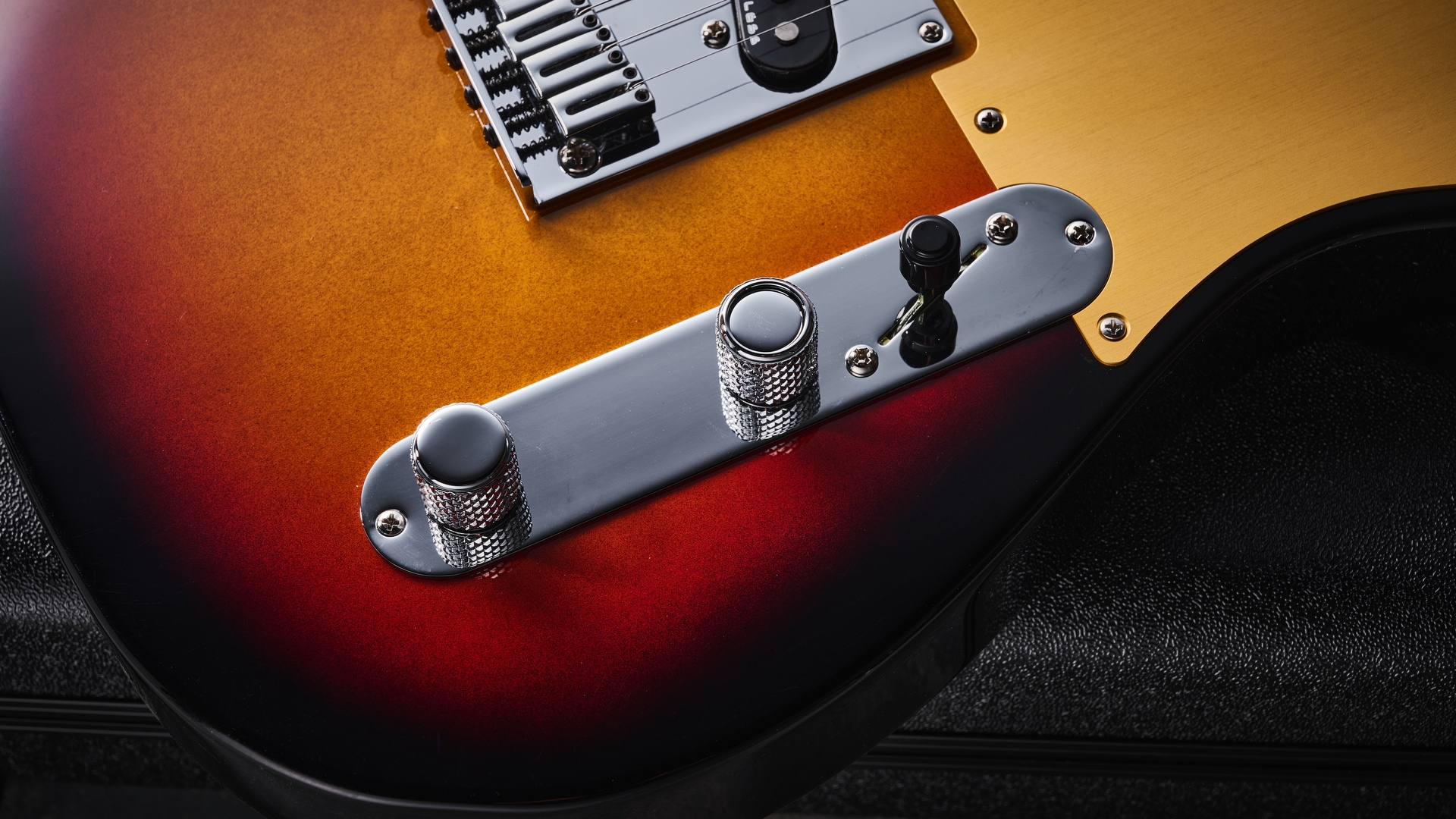
- Alder: An affordable and readily available wood that Fender started using in 1956. It is relatively lightweight, with good resonance, sustain, and a generally balanced tone, with a little more brightness than some hardwoods, and is perfect for guitar construction as it is easy for luthiers to work with.
- Ash: The original Tele material. Ash can be sourced natively in North America, making it ideal for American-made Fenders. It boasts plenty of treble – even more than alder – and sustain, though less warmth than other woods. The bright tone is ideal for Telecasters.
- Ashtray bridge: The very vintage-looking Telecaster bridge assembly, which has a metal raised surround that looks like an ashtray, and in some models a removable chrome cover that fits over this assembly. It has been known to actually be used as an ashtray by some artists.
- Bigsby: A substantial, spring-loaded tailpiece-cum-vibrato system that sits at the base of your guitar. The Bigsby is famous for its retro looks and subtle tonal modulation when its arm is moved, compared to other vibrato systems that can have more dramatic effects. Bigsby is now owned by Fender.
- Blackguard: A nickname given to the original Telecaster models produced between 1950-1954, famous for their black pickguard, hence the name.
- Butterscotch: A finish synonymous with Telecasters that is a deep yellow color with a hint of brown. Usually paired with a black pickguard, butterscotch was the original Telecaster color and remains one of the most popular finishes to this day.
- C-shape: The traditional neck shape of a Telecaster, that, if a cross section of the neck were taken, would resemble the shape of the letter ‘C’. The C-shape neck is considered one of the more comfortable and versatile neck shapes and remains one of the most popular for electric guitars.
- Modern 'C': A newer take on the classic C-shape, with a slimmer feel to its vintage older brother. The modern ‘C’ can be more comfortable for smaller hands, compared to vintage C-shaped necks, which can feel deep and thick.
- Partscaster: A Telecaster built from a selection of independent parts e.g., neck, body, hardware. This can be a more cost-effective way of building a personalized Tele.
- Skunk stripe: The stripe of walnut down the back of Fender guitar necks which fills in the gap where the truss rod channel has been routed out.
- Spaghetti logo: The traditional Fender logo used throughout the 50s and featured on the original Telecasters. It is a thin, script logo with featured silver lettering and a thin black outline. The Spaghetti logo is still used today on many Teles, though depending on the model, it may feature a different logo, called the Transitional logo.
- Thinline: Thinline refers to the range of semi-hollow Telecasters that feature an f-hole on one side. Due to its semi-hollow construction, the thinline range of Teles has a slightly more acoustic, open, and warmer tone than solid-body Telecasters, but are still very versatile.
- Three-saddle bridge: A bridge type used in vintage Telecasters where each saddle supports two strings. It is particularly good for palm muting when playing, however it does suffer from less accurate intonation.
- Twang: A description of tone that is bright with a quick attack and snap. This is a common description used for the traditional Telecaster sound, which has these qualities in abundance.
How we test
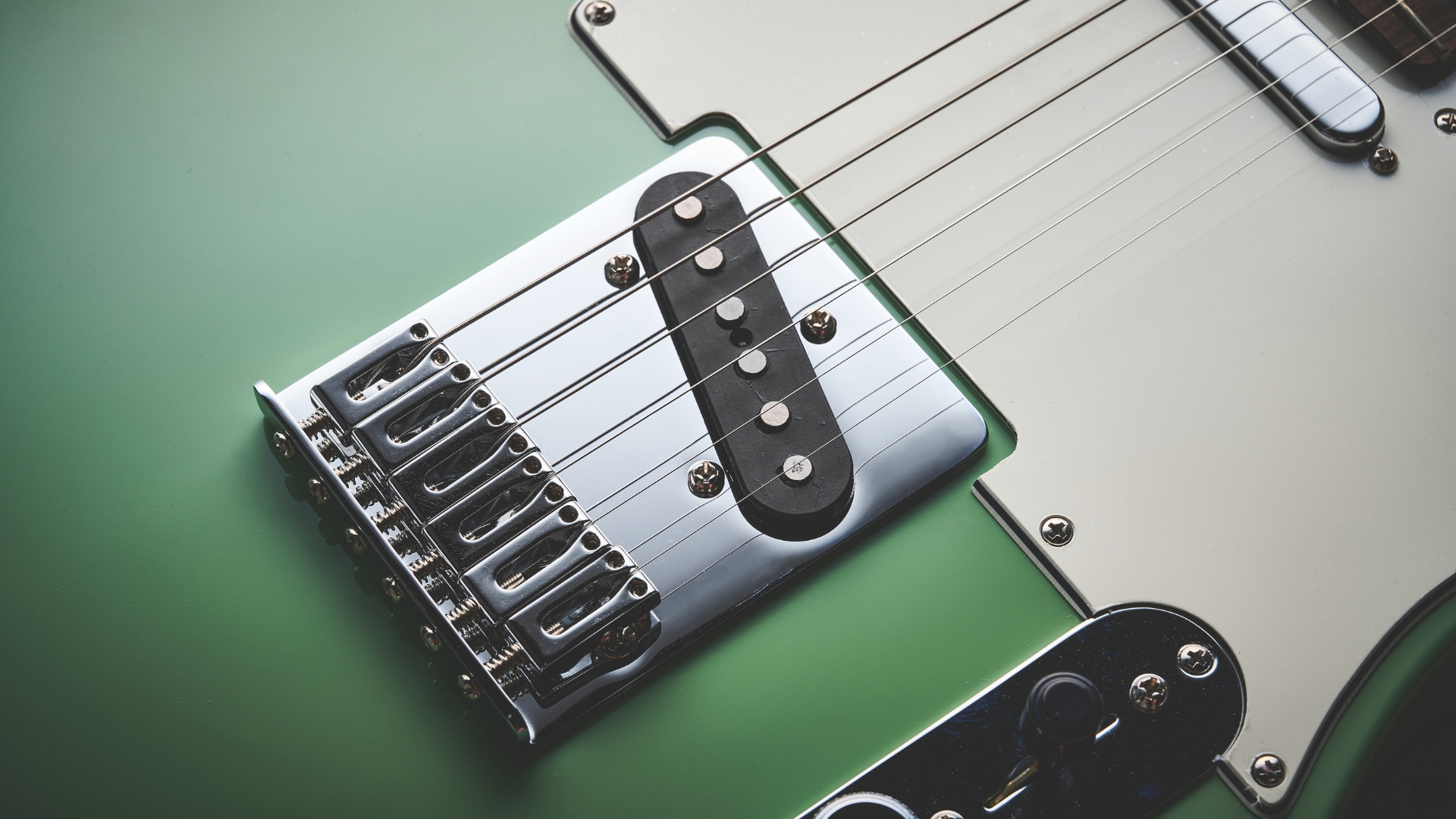
When testing the best Telecaster guitars, we take a similar approach to that of any guitar. With over 60s years of reviewing gear, the Guitar Player team has encountered more than a few Telecasters in our time, so we know what makes a truly great T-type.
We'll start off by assessing the build quality of the instrument, checking for any finish imperfections, sharp fret ends, as well as the way the hardware has been installed. We'll also check things that go beyond superficial, like the snugness of the neck pocket, the break angle of the strings, and how neatly the electronics are done inside the guitar.
Next we'll move on to the playability of the instrument. Here, we're looking at how the neck feels in the hand, the fret size, the fretboard radius, string spacing, and any other comfort factors like bevels, the bridge position, and where the knobs are located.
We'll try various playstyles out, whether it's chicken picking, sweep picking, and everything in between. We're looking to see how easy the instrument is to play, how versatile it is, and if there's anything about the neck that hinders certain playstyles.
Finally, we get into the sound. In this particular instance, we'll immediately look for that classic Tele twang from the bridge pickup, and that dark, woolly signature of the neck pickup. We'll try it through various mediums whether that's a tube amp, a practice amp, or an amp modeler, as well as running it through a variety of pedal types to see how it reacts.
We'll play it at home and with groups to see how it cuts through the mix and where applicable, see how it handles when recording in the studio. This variety of testing ensures we can see how it performs in a variety of scenarios, and see if it has the renowned Telecaster versatility that makes this type of guitar so popular.
Read more on how we test gear and service at Guitar Player.
Related Buyer's Guides
- Best Electric Guitars Under $1,000: Fender, Epiphone, Gretsch And More
- Best Electric Guitars Under $500: Budget Axes To Suit All Players
- Best Tube Amps: Perfect Pairings For Your Tele
All the latest guitar news, interviews, lessons, reviews, deals and more, direct to your inbox!
Rod Brakes is a music journalist with an expertise in guitars. Having spent many years at the coalface as a guitar dealer and tech, Rod's more recent work as a writer covering artists, industry pros and gear includes contributions for leading publications and websites such as Guitarist, Total Guitar, Guitar World, Guitar Player and MusicRadar in addition to specialist music books, blogs and social media. He is also a lifelong musician.
- Connor Godfrey
- Matt McCrackenJunior Deals Writer


